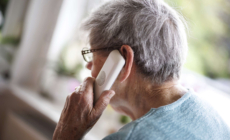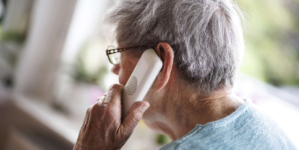-
Messi’s New Bodyguard? Argentina’s Rodrigo De Paul Joins Inter Miami - 20 mins ago
-
Yankees’ Aaron Judge Finally Breaks Silence Following Grim Injury Update - 45 mins ago
-
2025 NASCAR Odds: Kyle Larson, William Byron Favorites For Brickyard 400 - about 1 hour ago
-
Dodgers Could Reunite With Closer Kenley Jansen in Deadline Homecoming - about 1 hour ago
-
Liverpool to Create Permanent Memorial Sculpture at Anfield to Honor Diogo Jota - 2 hours ago
-
Elderly Americans Lose $745M to Scams in 2025 So Far - 2 hours ago
-
2025 MLB Hall of Fame Primer: Ichiro Suzuki, CC Sabathia, Dave Parker, More - 2 hours ago
-
At Least 11 People Injured in Stabbing at Michigan Walmart - 3 hours ago
-
Phillies vs. Yankees Highlights | MLB on FOX - 3 hours ago
-
Rams’ Sean McVay Drops Concerning Matthew Stafford Injury Update - 3 hours ago
The Americans More Likely To Believe In Ghosts
There are five demographics in the U.S. which are more likely to believe in ghosts than others, according to recent research from Gallup.
Why It Matters
Paranormal belief, whether its ghosts or spiritual healing, has long been a societal and cultural fascination, from Paranormal Investigator TV Shows to fictionalized horror movies and franchises.
Getty Images/Ashley L Duffus
What To Know
Gallup’s poll found that Americans are mostly skeptical about paranormal phenomena, but certain demographics are more likely to believe than others.
The demographics more likely to have paranormal beliefs are:
- Women, 40 percent
- People who infrequently attend religious service, 40 percent
- College non graduates 38 percent
- Political moderates, 37 percent
- Liberals, 35 percent
These groups are all more likely to be open to belief than men (28 percent), conservatives (28 percent), college graduates (28 percent) and weekly churchgoers (22 percent).
Overall, 48 percent of American adults believe in psychic or spiritual healing, while 39 percent express a belief in ghosts.
The Gallup poll also identified eight paranormal phenomena, which are listed below.
- Psychic or spiritual healing or the power of the human mind to heal the body
- Ghosts, or that spirits of dead people can come back in certain places and situations
- Telepathy, or communication between minds without using the traditional five senses
- That people can hear from or communicate mentally with someone who has died
- Clairvoyance, or the power of the mind to know the past and predict the future
- Astrology, or that the position of the stars and planets can affect people’s lives
- Reincarnation, that is, the rebirth of the soul in a new body after death
- Witches
The Gallup poll then asked Americans’ about their believe in each of these individual phenomena.
The percentage of people who responded to Gallup poll that they believed in those seven identified phenomena for each category in chronological order is as follows: 48 percent, 39 percent, 29 percent, 27 percent, 26 percent, 25 percent, 24 percent, 24 percent.
The percentage of people who responded to the Gallup poll that they were not sure about the seven identified phenomena for each category in chronological order is as follows: 19 percent, 19 percent, 21 percent, 22 percent, 23 percent, 19 percent, 25 percent, 15 percent.
The percentage of people who responded to the Gallup poll that they do not believe in the seven identified phenomena for each category in chronological order is as follows: 32 percent, 42 percent, 28 percent, 49 percent, 50 percent, 55 percent, 50 percent and 60 percent.
The phenomena that has the most belief was ‘Psychic or spiritual healing or the power of the human mind to heal the body,’ while the phenomena that had the least belief was witches.
The findings were based on a Gallup poll which was conducted from May 1 to May 18 of this year.
What People Are Saying
The Gallup Poll reads in part: “Most Americans approach paranormal phenomena with caution; however, women, those who attend church less frequently and adults without a college degree are more likely than their counterparts to be open to believing in at least a few paranormal phenomena. Meanwhile, religious service attendance is most associated with skepticism.”
What’s Next
Gallup took similar surveys in 1994, 2001 and 2025. This poll stated that Americans’ belief in paranormal phenomena remains largely unchanged.
Source link































